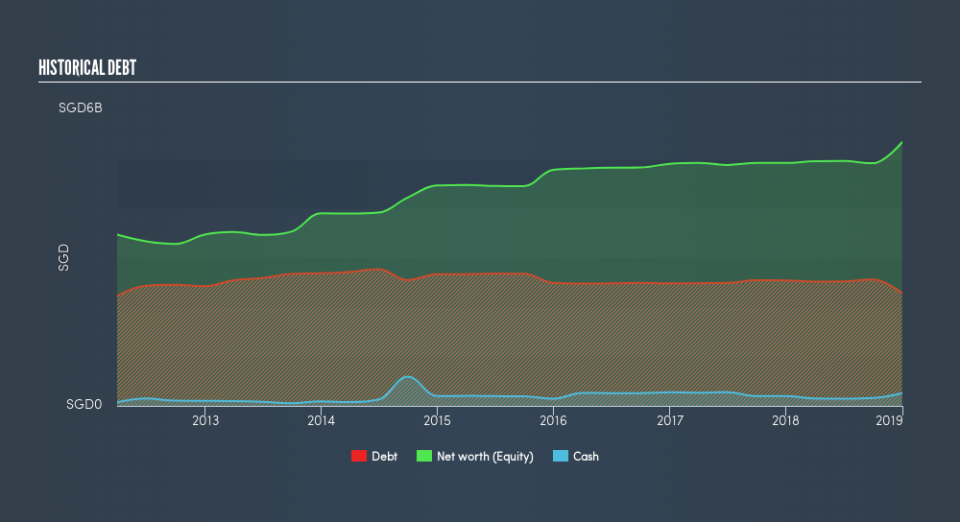Is Keppel REIT (SGX:K71U) A Healthy REIT?

Keppel REIT is a S$4.2b mid-cap, real estate investment trust (REIT) based in Singapore, Singapore. REIT shares give you ownership of the company than owns and manages various income-producing property, whether it be commercial, industrial or residential. The structure of K71U is unique and it has to adhere to different requirements compared to other non-REIT stocks. Below, I’ll look at a few important metrics to keep in mind as part of your research on K71U.
See our latest analysis for Keppel REIT
REIT investors should be familiar with the term Fund from Operations (FFO) – a REIT’s main source of cash flow from its day-to-day business activities. FFO is a higher quality measure of earnings because it takes out the impact of non-recurring sales and non-cash items such as depreciation. These items can distort the bottom line and not necessarily reflective of K71U’s daily operations. For K71U, its FFO of S$117m makes up 63% of its gross profit, which means the majority of its earnings are high-quality and recurring.
In order to understand whether K71U has a healthy balance sheet, we have to look at a metric called FFO-to-total debt. This tells us how long it will take K71U to pay off its debt using its income from its main business activities, and gives us an insight into K71U’s ability to service its borrowings. With a ratio of 5.1%, the credit rating agency Standard & Poor would consider this as aggressive risk. This would take K71U 19.52 years to pay off using just operating income, which is a long time, and risk increases with time. But realistically, companies have many levers to pull in order to pay back their debt, beyond operating income alone.
I also look at K71U’s interest coverage ratio, which demonstrates how many times its earnings can cover its yearly interest expense. This is similar to the concept above, but looks at the upcoming obligations. The ratio is typically calculated using EBIT, but for a REIT stock, it’s better to use FFO divided by net interest. With an interest coverage ratio of 1.69x, K71U is not generating an appropriate amount of cash from its borrowings. Typically, a ratio of greater than 3x is seen as safe.
In terms of valuing K71U, FFO can also be used as a form of relative valuation. Instead of the P/E ratio, P/FFO is used instead, which is very common for REIT stocks. In K71U’s case its P/FFO is 35.77x, compared to the long-term industry average of 16.5x, meaning that it is overvalued.
Next Steps:
As a REIT, Keppel REIT offers some unique characteristics which could help diversify your portfolio. However, before you decide on whether or not to invest in K71U, I highly recommend taking a look at other aspects of the stock to consider:
Future Outlook: What are well-informed industry analysts predicting for K71U’s future growth? Take a look at our free research report of analyst consensus for K71U’s outlook.
Valuation: What is K71U worth today? Is the stock undervalued, even when its growth outlook is factored into its intrinsic value? The intrinsic value infographic in our free research report helps visualize whether K71U is currently mispriced by the market.
Other High-Performing Stocks: Are there other stocks that provide better prospects with proven track records? Explore our free list of these great stocks here.
We aim to bring you long-term focused research analysis driven by fundamental data. Note that our analysis may not factor in the latest price-sensitive company announcements or qualitative material.
If you spot an error that warrants correction, please contact the editor at editorial-team@simplywallst.com. This article by Simply Wall St is general in nature. It does not constitute a recommendation to buy or sell any stock, and does not take account of your objectives, or your financial situation. Simply Wall St has no position in the stocks mentioned. Thank you for reading.

